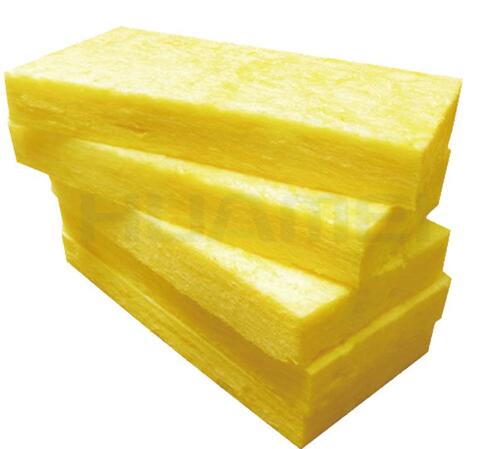E-mail: marketing@hbhuamei.com
Glass Wool
Huamei energy saving technology group stands as a premier producer of top-tier glass wool, renowned for its exceptional quality and performance. Our dedication to excellence is underscored by the fact that Huamei glass wool has garnered prestigious certifications including CE, ASTM, and BS international standards. These certifications serve as a testament to the unwavering commitment we hold towards delivering products that meet the most stringent global quality benchmarks.
Insulation glass wool is a natural, mineral and inorganic deposit of glass fibres combined with non-combustible resins, which may contain binders and oils to help control dust, and is an insulation material made from flexible, interwoven borosilicate glass wool.
Glass wool has a high level of insulation capacity and significant acoustic properties. Due to the inorganic nature of its raw material (mainly sand), glass wool has exceptional fire resistance properties. Thanks to these properties, glass wool is an ideal material for thermal and acoustic insulation and has a variety of applications in the home as part of roofing, false ceilings, plasterboard, home cinema, etc. It is widely used for its known advantages in terms of insulation, fire resistance and ease of installation.
Glass wool, also known as glass fibre, is made from a mixture of natural and recycled glass (recycled bottles, car windscreens and window glass), which is melted at 1,450 °C and then quickly spun into glass wool. These fibres are then bonded together and used as an insulating material. The glass wool creates air pockets which act as a barrier against heat loss, as air is a poor conductor of heat.
Glass wool can be found in wadding and rolls, as well as in insulation boards.

As a professional Glass Wool Board supplier, Huamei energy saving technology group can provide you the top glass wool boards. If you want to purchase high quality glass wool board with good cold performance and low price, please contact us!

Glass wool applications include structural insulation, pipe insulation, filtration and sound insulation. These glass wool are used in insulation products and are applied in several areas of buildings. In addition, glass wool is the most common insulation material used in ceilings in residential buildings and has the following applications.
1. For metal and wooden roofs in all inclination levels,
2. Used and unused roof spaces,
3. Steel construction industrial structures
4. Sandwich roofs, animal shelters and chicken farms
Compressive strength is required when structures are likely to be subjected to high weight loads. Not only does the rock have a density of up to 200 kg per cubic metre (compared to 110 kg of glass), it can also provide more cost-effective performance where compressive strength is the main requirement. Typical applications where compressive strength is required are flat roofs.
When it comes to sound insulation, mineral wool is often the first choice for noisy areas. This is because it is denser than glass wool and therefore passes through the insulation with much less sound.
Although glass wool is non-combustible, rock wool has better fire resistance properties, so much so that it can be used as a fireproof material. The simple fact is that high-density mineral wool products (120kg m3 ) are required to extinguish fires. At these densities, rock wool is the most cost-effective solution and offers excellent fire resistance. However, as with glass mineral wool, low-density rock wool insulation will not burn but will not prevent flames from penetrating between the fibres either. In conclusion, for building fire protection, high-density rock wool is the ideal solution.
The maximum service temperature is a measure indicating the highest continuous temperature at which an insulation material can operate without any loss of insulation performance. A common misconception is that this is the maximum temperature at which a product can be used before it burns. This is not the case and all mineral wool is non-combustible. However, compared to glass wool, rock wool can withstand higher temperatures without loss of its insulation properties. Typically, glass mineral wool can operate at temperatures up to 400°C (typically 230°C, unmodified), while rock can operate at temperatures up to 700°C. Rock wool is therefore the most common type of insulation used in high-temperature processing plants.
It is a common misconception that glass wool or rock mineral wool fibres are damaged by water. However, water takes over the cells between the glass wool, replacing the insulating pockets of air and thus preventing the material from performing its insulation requirements. The lighter the density, the easier it is for water to penetrate. It is important that mineral wool (glass and rock) can be designed to be water-resistant to meet the conditions of its application and that silicon is added as a water repellent to stop water penetration into the air pockets in situ during application.
If you are looking for a moisture-resistant form of insulation, glass wool is undoubtedly the winner. glass wool is water resistant and therefore does not suffer from moisture and provides good conditions for the growth of fungi, mould, mildew or other bacteria. Glass wool, on the other hand, is subject to moisture and dampness and can promote the growth of fungi, mould and rot, and its insulation properties can be severely reduced.
If you are considering installing your own insulation, glass wool is considered easier to handle. Although heavier than glass wool, rock wool is easier to cut, move and install in place. Glass wool, on the other hand, is softer, which makes it difficult to fit into the required space. Glass wool, in particular, generates a lot of fine dust during construction, which can be itchy for those working directly with it. As a result, it also requires skilled workers.
It is cheap, cost-effective and relatively inexpensive compared to other insulators available on the market.
In addition to lofts, cellars and outdoor shelters, it can also insulate various surfaces such as ceilings, roof spaces, occupied roof spaces, walls, partitions, roofs, etc.
1. Rigid Mineral Wool Insulation Sheets
Sheets with wire-mesh reinforcement withstand extreme shock and vibration.
Sheets with foil facing reflect heat. The foil facing is also known as foil scrim kraft (FSK).
2. Thermally Stable Composite Paper Insulation Sheets
Made of flexible composite paper, these sheets won't shrink or lose shape in the high temperatures of air furnaces and hot water tanks.
3. Fiberglass Insulation Sheet
These lightweight, flexible fiberglass sheets are typically used to insulate equipment and appliances.
4. Fiberglass Building Insulation Sheets and Strips
Also known as batts, these fiberglass sheets and strips are used to insulate walls, ceilings, and floors.
Sheets/strips with moisture barrier prevent condensation from forming. Use electrical tape to secure the ends.
Sheets/strips with kraft paper facing can be layered to increase thermal efficiency. Seal with reinforced insulation tape (sold separately).
5. Rigid Fiberglass Duct Insulation Sheets
Sheets with foil facing reflect heat. The foil facing is also known as foil scrim kraft (FSK). Seal with reinforced HVAC tape (sold separately).
To seal sheets with kraft paper facing, use reinforced insulation tape (sold separately).
6. Fiberglass Pipe Insulation
This common insulation material is typically used on hot and cold water lines and in process piping. To use outdoors, add metal jacketing.
Sheets/strips with foil facing reflect heat away from pipe. The foil facing is also known as FSK. Seal with reinforced HVAC tape (sold separately).
Sheets/strips with kraft paper facing have an all-service jacket (ASJ) made of kraft paper. Seal with reinforced insulation tape (sold separately).
7. Ultra-High-Temperature Quartz Glass Filter Wool
Form unique shapes inside filters to sift corrosive liquids and gases at temperatures up to 1900°F. Because this wool is flexible, it’s good for use inside tubing and other lab equipment that doesn’t support flat filters. It won’t expand or contract when used with harsh materials, such as acids and acidic gases; however, hydrofluoric and phosphoric acids will eat away at the quartz material. Unlike natural quartz, this quartz is more than 99.95% pure, which means it won’t let in contaminants and is useful in applications where maintaining purity is crucial.
Glass wool is an insulating material made from glass fibres called borosilicate glass, which are arranged with an adhesive to form a wool-like texture.
Glass wool is used in partitions, roofs, ceilings/vaults, floors, metal buildings as well as industrial and automotive insulation.
GlassWool is used as an insulation and coating that saves energy by effectively reducing the rate of heat transfer through the components of the house. glass wool provides insulation that maintains the building envelope, keeping the heat in during the winter months, but allowing us to vent the heat out during the summer months to improve comfort and save energy.
A major source of heat loss from a house is through walls. Calculate the rate of heat flux through a wall 3 m x 10 m in area (A = 30 m2). The wall is 15 cm thick (L1), and it is made of bricks with thermal conductivity of k1 = 1.0 W/m.K (poor thermal insulator). Assume that, the indoor and the outdoor temperatures are 22°C and -8°C, and the convection heat transfer coefficients on the inner and the outer sides are h1 = 10 W/m2K and h2 = 30 W/m2K, respectively. These convection coefficients strongly depend on ambient and interior conditions (wind, humidity, etc.).
Huamei energy saving technology group is located in the central zone of Beijing-Tianjin-Hebei Province. It is a manufacturer integrating r&d, production and sales. It has seven branches and ten production plants in four provinces of China, specializing in the production of rubber foam insulation materials, and glass wool products.
If you have further questions about Glass Wool, please feel free to ask us!
Read More
Copyright © Huamei Energy-saving Technology Group Co., Ltd. All Rights Reserved | Sitemap | Privacy Policy
Insulation solutions LIST: Insulation solutions LIST